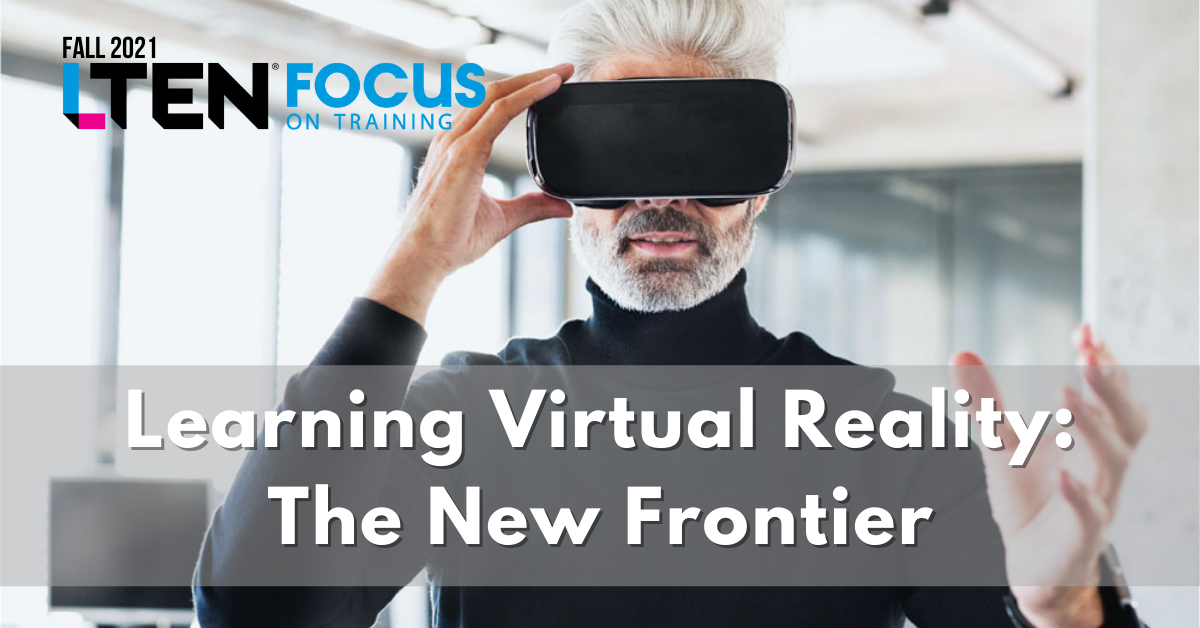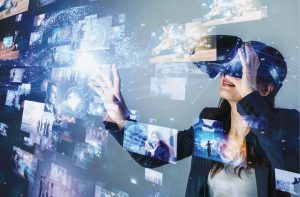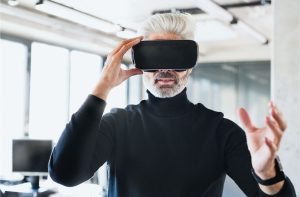
Learning in Virtual Reality: The New Frontier
Technology – By David R. Brin
VR helps innovative learning leaders combat today’s challenges
Why is there a push toward leveraging virtual reality (VR) in the training world today? Simply put, VR enables far more reach and frequency as well as immersive, customized learning experiences.
When the COVID-19 crisis first hit, companies faced an immediate learning and development challenge of how to overcome disruptions in the training cadence due to in-person class restrictions. Many companies responded quite efficiently by transitioning their training to instructor-led video conferencing platforms.
New challenges arose, however, in this type of virtual learning space, including facilitator and learner apathy, lecture-based content overload and the pressure to hit training metrics while continually driving innovative and interactive learning.
While engagement in facilitator-led virtual classes can be increased with poll questions, breakout room or the raising of a virtual hand to instructor prompts, there are still limitations in validating knowledge, coaching and providing unique, immersive training experiences. These real-time observations, live coaching and role-play activities were more easily offered during the pre-COVID world.
 Meeting the Challenge
Meeting the Challenge
Innovative learning leaders are combating these challenges by using VR, one of the fastest-growing technologies in training, as a tool to expand their digital footprint, broaden their reach and improve all aspects of adult learning.
Let’s step back for a moment to align on a few definitions for the purposes of this article.
There are some distinct differences between VR and augmented reality (AR) that drive the learning experience.
AR can be accessed by a camera-enabled smartphone app or dedicated headset with transparent lens and allows users to see the real world, with additional information and virtual objects layered on top for enhancement. VR requires a headset device that blocks out the outside world and allows users to explore and interact with a completely virtual one.
Pokémon Go is a great example of a global AR campaign that in 2016 attracted more than 250 million people per month at its height. The game encouraged players to complete tasks during their day (using smartphones or video viewers to collect virtual characters that were projected on real-world surroundings), motivated users through leaderboards and drove a unified culture across the globe.
VR utilizes these same components but raises the stakes by creating an entirely computer-generated simulation of an alternate world using equipment such as computers, headsets, sensors and gloves.
 Improving Experiences
Improving Experiences
Initially VR was used to improve gaming experiences. However, educators across industries are quickly realizing the value of this tool as a new approach to drive content to a broad audience while simultaneously improving the overall learning experience. Using VR as a training tool controls the learner environment and capitalizes on many adult learning principles:
- Content is relevant.
- Content is engaging and motivates learners.
- Content is contextual and provides a big picture.
- Content is effortful.
- Content is social and engages different groups of people.
- Content drives practice.
- Content is spaced so the right amount is delivered.
VR creates immersive learning experiences that can simulate real-life work situations to offer on-the-job training in a risk-free environment. Ford, for example, uses VR headsets to train factory workers before they go out on the assembly line. The result? Less injuries and a shorter learning curve.
Such is the case with the healthcare industry. VR technology can be used for interactive new-hire product training classes, marketing in-services, skill building and even as a vehicle for a virtual customer dinner program.
Advanced VR training and education platforms make it easy to collaborate, create and learn in a digital world. Learners from across the globe can design personalized avatars, meet with other participants and complete relevant training tasks such as case observations, meet-and-greet sessions with customers and full didactic presentations in a customized world tailored to companies’ educational program needs. By pairing such platforms with a VR headset such as Oculus Quest, learners and trainers are transported into a customized simulation to learn, engage and enable real-time behavioral feedback.
Conclusion
Investing and implementing a VR learning curriculum drives key benefits, including:
- Creating a culture of learning by improving the training experience through customized, interactive activities.
- Controlling training costs by developing an on-demand world that is accessible instantly.
- Minimizing common learning distractions by offering engaging, immersive experiences for trainees throughout the learning cycle.
Learners, instructors and company stakeholders alike can reap the return on investment by adding VR as a dynamic tool to their digital training spectrum.
David R. Brin is senior director, learning strategy & operations, USCAN, for GE
Healthcare. Email David at david.brin@ge.com.








